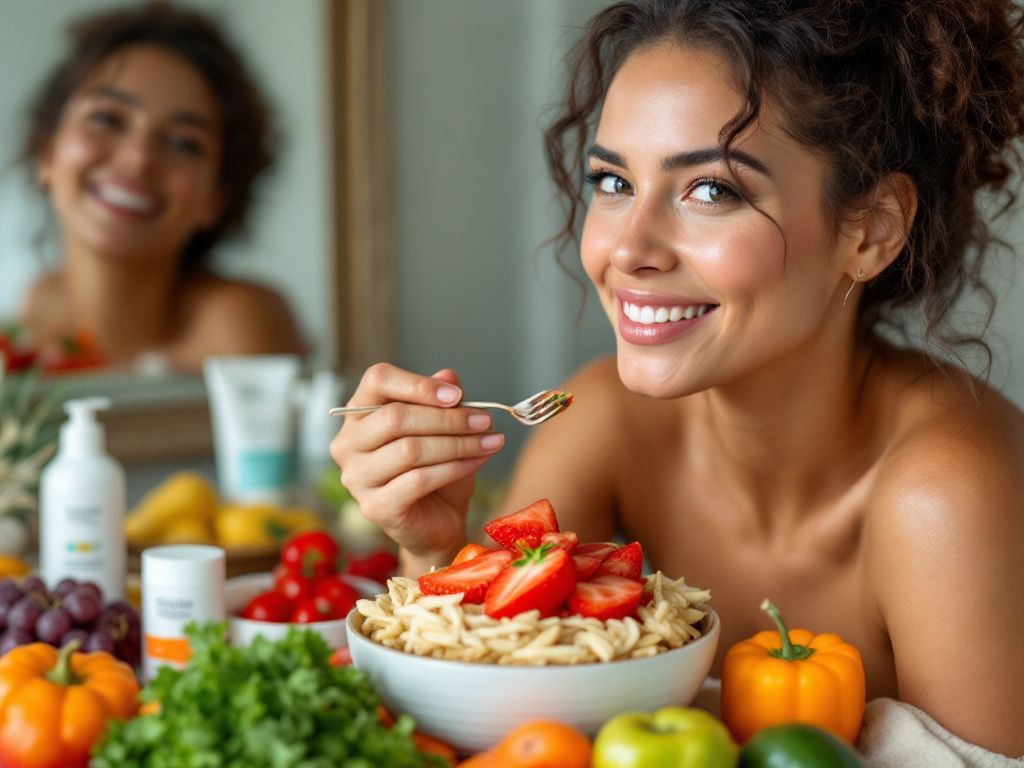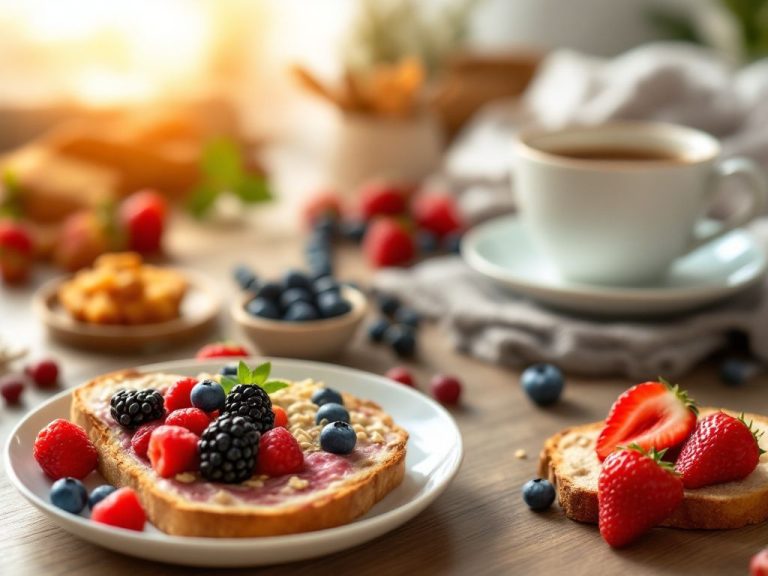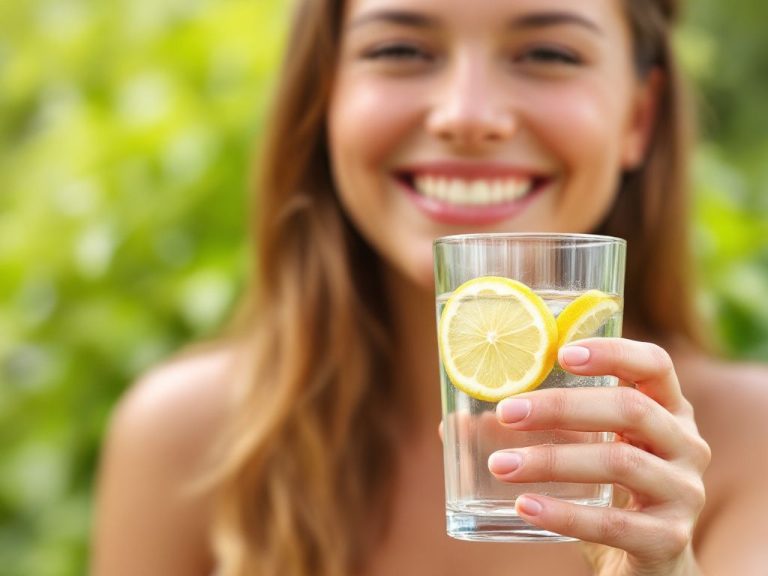Let’s step back and paint a picture: You’ve been staring into the mirror at your persistent acne, feeling all sorts of frustrated. It’s like it has declared a permanent war against your face. You’re wondering, could your diet be the hidden enemy? Well, you’re not alone in this. We’re diving into the muddy waters of how diet changes for acne could lead to clearer skin.
In our journey here, I’ll guide you through the nuts and bolts of transition management. This isn’t just about random foods and trendy diets. It’s about tangible, real-life changes. We’ll mess up, start again, and maybe even eat a piece of cake without guilt. So, how about we get started?
Table of Contents
ToggleThe Heart of the Problem: Why Diet Might Be Messing with Your Skin
Before we go any further, acknowledge this: Diet plays a monumental role in skin health. Our skin isn’t just an external shell; it responds to our internal systems. For many, improper dietary habits fuel the acne fire.
Now, dietary adjustment isn’t a sprint. It’s more like a slow-motion marathon. You’re considering swapping that delicious greasy pizza with a colorful, vibrant salad bowl—but how do you get there without spiraling into a junk food withdrawal?
**What Science Says**: Foods with high glycemic indexes, dairy products, and hormone-laden bites sometimes stir the acne pot. So, changing them out might just give your skin the peace treaty it’s been crying out for.
But enough with the daunting chat. Let’s talk about how to navigate this shift, one realistic step at a time.
The First Leap: Recognize Personal Patterns
Before you march into a full-blown dietary overhaul, the key step is honing in on what might be causing your skin dramas in the first place. Everyone’s skin reacts differently to various foods.
**Action Step**: Start simple. Maintain a food diary. Jot down everything you munch on and how your skin reacts over a couple of weeks. Patterns might surprise you—maybe it’s that nighttime chocolate, or perhaps it’s your love for bread crusts.
Small, Manageable Tweaks: You’re Not Alone

Here’s the thing about dietary changes: they don’t stick if they feel like punishment. Nobody wants to eat grass for breakfast, right? So, let’s not expect you to go from enjoying burgers to being a salad guru overnight.
**Here’s how to roll with it**:
- Substitute Smartly: Swap white rice for brown rice or quinoa. It’s subtle but impactful. And who knows? You might even start enjoying the nutty flavors more than the plain old routine.
- Experiment with Variety: Instead of pulling a 180 on your diet, bring in some beta-carotene-rich foods like sweet potatoes or carrots gradually. They’re packed with acne-fighting nutrients.
- Protein Power: Look, red meat might be delicious, but it isn’t always your skin’s best friend. Try adding more fish or plant proteins. You’ll get those vital Omega-3 fatty acids which work wonders for reducing inflammation.
- Vitamin Vigilance: Foods like spinach, kale, and avocado should become your pals. They brim with vitamins essential for healthy skin.
An occasional treat isn’t going to make or break your skin reform. The trick is allowing yourself to indulge once in a while without feeling like a dietary rebel.
Managing the Emotional Transition: You Got This
Emotional attachment to food is real, and it’s completely okay to feel a little sentimental when you move into new diet territories. We all have comfort foods: chocolaty hugs during a bad day, pasta parties when we’re happy.
**Coping Skills for the Win**:
- Mindful Eating: This means savoring every bite and thus appreciating food more than ever—really taste it, don’t just gobble it down while glued to Netflix.
- Positive Reinforcement: Celebrate each week you follow through, maybe with a small treat or a note to yourself. Trust me, little victories create huge impacts.
- Support Systems: Buddy up with a friend or loved one for this lifestyle upgrade. You’ve got healthier choices together and maybe even a few kitchen giggles.
Common Dilemmas: We’re All in This

Let’s squabble over some realistic concerns here because nothing’s perfect.
- Cravings Are Monstrous: Fancy a salty snack? Opt for air-popped popcorn. Or how about a small handful of nuts instead of grabbing a fry?
- Eating Out: Consider restaurant options that offer whole-grain or salad alternatives. Customize dishes if you have to. Don’t be shy—it’s your skin’s well-being.
- Results Are (Frustratingly) Slow: At times, it feels like new habits aren’t cutting through. Remember, skin cycles last at least a month, so patience truly is a virtue.
And, keep circling back to your intentions: Healthier skin. More energy. These tiny reminders amplify motivation immensely.
What to Watch Out for: The Don’t Do List
While diving into diet changes, don’t get carried away with miracle diets. Trust me, they do more harm than good. Instead, consider these common pitfalls that could sidetrack your progress.
Foods to Minimize:
- Dairy Overload: Sorry cheese lovers, dairyl may spike insulin levels and exacerbate acne for some folks.
- Refined Sugars and Grains: Avoid constant late-night ice cream top-ups. Instead, reach out for natural sweetness like fresh berries.
Beware of Bandwagon Diets:
- Jumping endlessly from one fad to another is daunting and often counterproductive. Keto today, vegan tomorrow? Your body will thank you less.
Focus on a balanced approach that resonates long-term rather than flash-in-the-pan solutions.

Habits That Support Dietary Tranformations
It’s not just about diet changes alone. Let’s throw in a few lifestyle tweaks along this acne-busting path.
- Hydration is Key: Glug down that H2O! It helps in flushing out toxins and keeping your skin tone bright.
- Sleep Soundly: Rest well. Simply, a good night’s sleep reduces stress—a prominent acne contributor.
- Maintain a Hygiene Ritual: Change pillowcases frequently. Commit to face washes post workout. Basic but effective practices.
Evaluating Your Progress
After incorporations and shifts, begin evaluating what’s working or not. You didn’t come this far to stand stuck, right?
**Give this a go**:
- Monthly Comparisons: Cross-check monthly photos or maintain a checklist on improvements or breakouts.
- Consultation: An informed opinion is Gold. A dermatologist may give tailored advice best suited to your skin.
At the conclusion of all this, remembering the golden rule pays off—personalization is key. After all, who knows your body better than you? Iterate, resonate, and adjust accordingly.
In the overarching saga of tackling acne with dietary adjustments looming ahead, give yourself the compassion breaks. Cherish the course you’re crafting.
This guide isn’t some gospel truth aiming to remains untouched but rather a friendly pointer to embark upon diet changes for acne management. It’s about balancing growth—with misses and wins—as one navigates a skin-friendly lifestyle like a seasoned guide.
Here’s to good skin days becoming every day! 🚀
Frequently Asked Questions
How does diet affect acne?
Diet can significantly impact acne by influencing blood sugar levels, hormone production, and inflammation. Foods with high glycemic indices, such as white bread, pasta, and sugary drinks, can cause rapid spikes in blood sugar, leading to increased insulin and insulin-like growth factor 1 (IGF-1) levels. These hormonal changes can result in increased sebum production and inflammation, exacerbating acne[2][3][4>.
What foods should I avoid to help manage acne?
To help manage acne, it is advisable to avoid foods and beverages that are high in sugar, refined carbohydrates, and dairy products. Specific items to limit or avoid include white bread, pastries, sugary drinks, milk, cheese, yogurt, and whey protein. These foods can trigger blood sugar spikes, increase hormone production, and promote inflammation[1][2][4>.
What foods are beneficial for reducing acne?
Foods that are beneficial for reducing acne include whole, nutrient-dense foods that fight inflammation. These include low-glycemic fruits and vegetables, whole grains, lean proteins, and foods rich in omega-3 fats such as fatty fish, avocados, and chia seeds. Additionally, consuming foods high in antioxidants like colorful vegetables, fruits, and leafy greens can help reduce inflammation and improve skin health[2][3][4>.
Can a low-glycemic diet help reduce acne?
Yes, following a low-glycemic diet may help reduce acne. Studies have shown that diets that avoid high-glycemic foods, which cause rapid blood sugar spikes, can lead to fewer acne breakouts. Low-glycemic diets focus on whole foods like vegetables, beans, and whole grains, which help maintain stable blood sugar levels and reduce inflammation[2][4][5>.
References- Premier Dermatology Group: How Can Your Diet Affect Acne?
- Healthline: Hormonal Acne Diet: What to Eat to Improve Your Acne
- Healthline: Anti-Acne Diet: Can Food Help or Worsen Acne?
- American Academy of Dermatology: Can the right diet get rid of acne?
- EatRightPro: Investigating a Potential Link Between Diet and Acne








